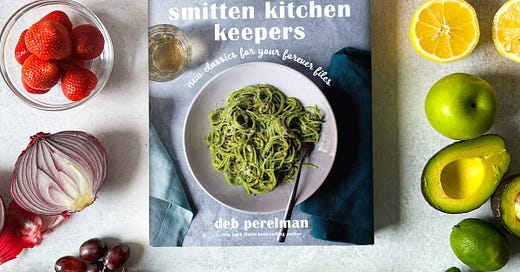What food can tell us about the creator economy
Some of the tensions in building direct-to-consumer businesses can be spotted in the food genre.
The food genre is where some of the characteristics and changes in the online space can be fairly easily spotted; all of which are influencing the ability for anyone to build a successful direct-to-consumer creator business. I’ve written about the economics of food creators previously, but thought I’d come back to this subject because what happens in the food genre can have lessons for us all. First, a little bit of history…
Page generation websites
Back in the early days of the internet, all over the world, individuals with a passion for cooking set up their own websites and published recipes. This proved to be a wonderful opportunity for people to create a business out of their hobby, with revenues coming primarily from display advertising, sponsorship and affiliate links to buy products. For some, other opportunities emerged, say cookery books or TV presenting. These bloggers and their individual businesses were the precursor to the creator economy we know today. My own favourite is Deb Perelman’s Smitten Kitchen, which as well as recipes, includes a weekly newsletter, affiliate products, 1.8m followers on Instagram, a YouTube channel plus several best selling cookbooks. Plus of course chefs launched their own direct to consumer businesses as well - Jamie Oliver most notably who was also one of the earliest.
Broadcasters and publishers also got into the game. Using Channel 4 as an example, back in the early 2000s, the broadcaster’s online portfolio was dominated by a series of commercial verticals. 4Food, 4Homes, 4Car. Each of these verticals emerged thanks to the rise of their TV genres and on screen talent. Location, Location, Location, Grand Designs, Jamie Oliver, Gordon Ramsay, Kirsty and Phil, Sarah Beeny. Rather than creating websites for individual shows (which may end up having a short lifespan - one exception was aplaceinthesun.com), each of these verticals had similar propositions: editorial written content pages, galleries, a collection of programme support material for whatever was on air at the time as well as genre-specific features such as recipes, car reviews, DIY home improvement guides. These destinations created a whole raft of commercial opportunities from on-air sponsorship around the shows and genres, online only campaigns and competitions through to affiliate links and so on.
For a while, when the internet was much more empty, these bloggers and commercial verticals rode high, generating revenues through meeting the growth in audience interest in these hobbies and passions. However, after a few years things began to change…
Keep reading with a 7-day free trial
Subscribe to Business of TV to keep reading this post and get 7 days of free access to the full post archives.





